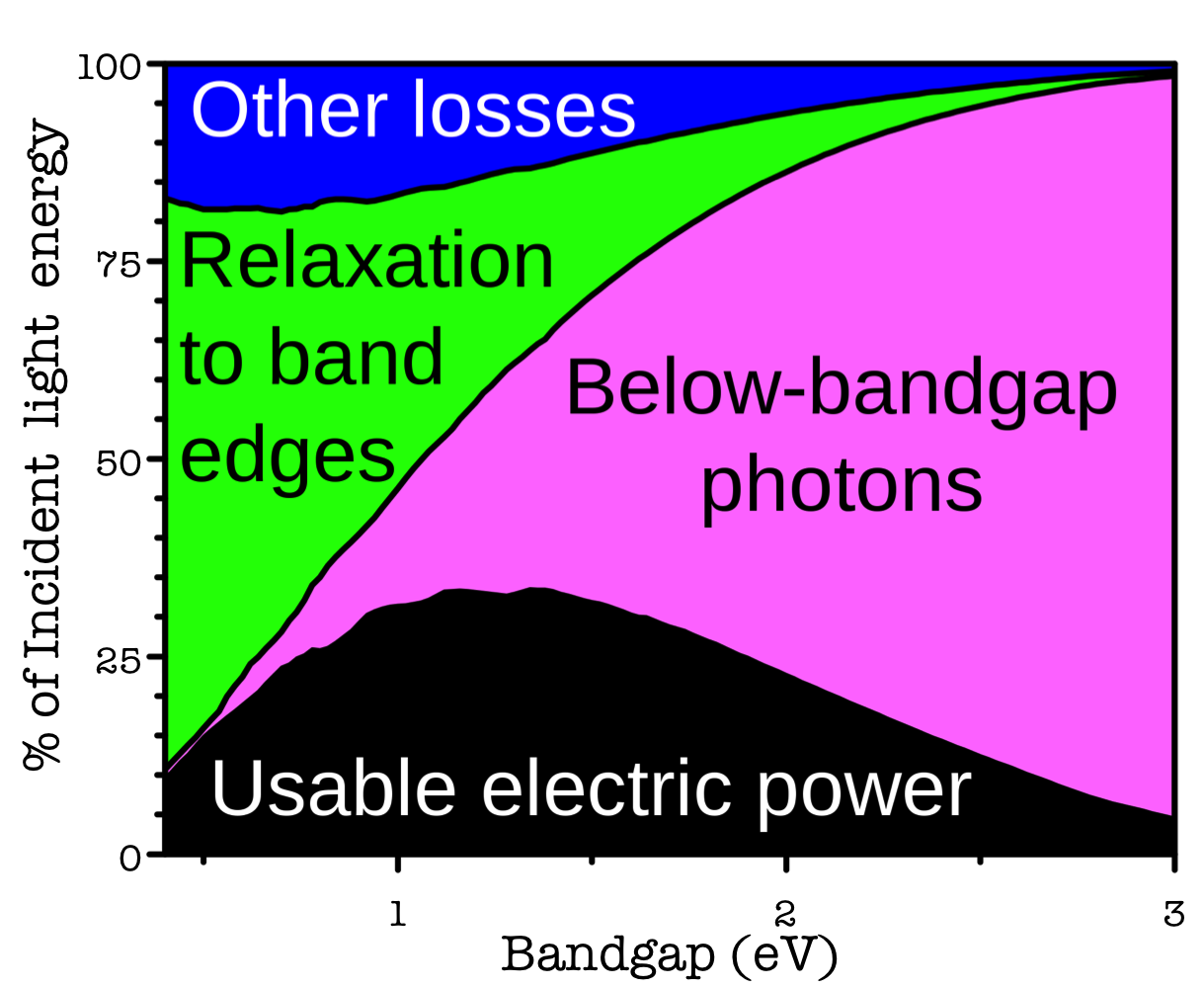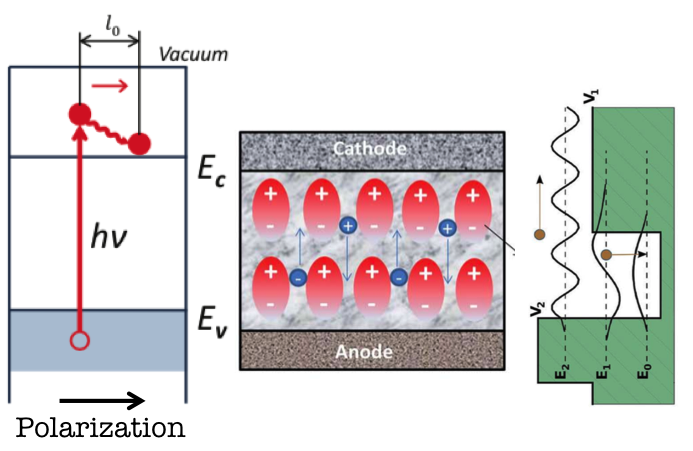Solar Cells
Photovoltaics (PVs) convert solar energy into electricity. Currently only a few light-absorbing materials are actively studied, which include Si, GaAs, CIGS compound etc. Explore light-absorbing materials that have been studied for last half-century in NREL best PV chart. Our team believes that there exist many unexplored materials that can much outperform the state-of-the-art in terms of efficiency, stability, and cost of PVs. Explore the research projects of current interests.
-
Light absorbers to overcome Shockley-Queisser limit
PV efficiency is generally konwn to be limited by theoretical Schockley-Queisser (SQ) limit, which is approximately 33% in a single-junction cell. Our team is particularly interested in developing novel light absorbers that potentially offer an efficiency beyond SQ limit. The key to realizing this goal lies in the hot-carrier harvesting, which will be one of the main realms of the next-generation PV research.
Useful Materials:
JAP 32, 510 (1961)- The first derivation of SQ limit
EES 9, 2197 (2016)- A review on computer simulations for PVs
PRL, 112, 257402 (2014)- The first ab initio methods for characterizing hot carriers
From Wikipedia, Shockley--Queisser limit
-
Quantum-dot-based solar cells
Quantum dots (QDs) offer the potential in PVs owing to favorable optical properties, including facile bandgap tunability and wide spectral responses. Yet, despite these beneficial optical properties, the performance of QD-PVs is still limited. Our team investigates electronic and optical features that likely affect PV performances including charge trap states, band-edge states, and Stokes shift etc. with the aim to make QD-PVs competitive with conventional PVs.
Relevant Papers (from the group):
Phys. Rev. Lett. (2013), Adv. Mater. (2015), ACS Nano (2016)- Charge trap states
ACS Nano (2014), Adv. Energy Mater. (2019)- Band-edge manipulations
ACS Nano (2018)- Stokes shift
-
Ferroelectrics-based solar cells
Despite their potential to exceed the theoretical SQ limit, ferroelectric PVs (FPVs) have performed inefficiently due to their extremely low photocurrents. Our team strives to discover novel ferroelectric materials that likely overcome the challenge. Explore our previous works that indicate the large band-gap and inefficient e-h separations of active layer materials are the most important issues to be addressed for FPVs to compete with conventional devices.
Relevant Papers (from the group):
Chem. Mater. (2017)- β-CuGaO2 as a candidate Material
Proc. Natl. Acad. Sci. (2018)- Bi-based double-perovskites
EES 8, 838 (2015);PRB 90, 161409 (2014)